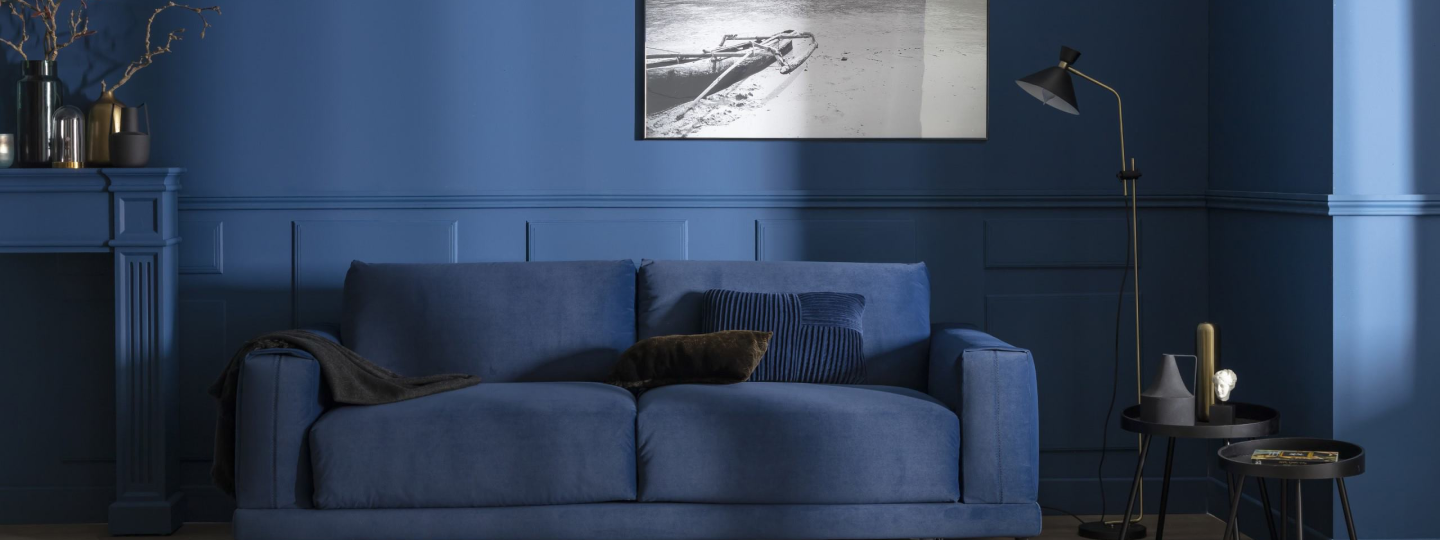
Decorating tips and advice

Pantone Color 2026: Cloud Dancer, the warm whit...
Following the enveloping color of Mocha Mousse in 2025 , the Pantone 2026 color of the year aims to be "a whisper of tranquility and peace in a noisy world."...
Pantone Color 2026: Cloud Dancer, the warm whit...
Following the enveloping color of Mocha Mousse in 2025 , the Pantone 2026 color of the year aims to be "a whisper of tranquility and peace in a noisy world."...

What color should I pair with my dark green sofa?
A dark green sofa has character . Whether it's velvet, linen, or another material, it immediately catches the eye. It's a real focal point in the living room. To...
What color should I pair with my dark green sofa?
A dark green sofa has character . Whether it's velvet, linen, or another material, it immediately catches the eye. It's a real focal point in the living room. To...

How to maintain a white sofa?
Elegant, modern, sober, refined, contemporary, bright, trendy: there is no shortage of adjectives to describe the white sofa which, for some time, has been the star of our living rooms...
How to maintain a white sofa?
Elegant, modern, sober, refined, contemporary, bright, trendy: there is no shortage of adjectives to describe the white sofa which, for some time, has been the star of our living rooms...

Braderie de Lille 2023: our Lille store is part...
Europe's largest flea market returns this first weekend of September On September 2 and 3 , don't miss the traditional Lille flea market , which attracts around 2 million...
Braderie de Lille 2023: our Lille store is part...
Europe's largest flea market returns this first weekend of September On September 2 and 3 , don't miss the traditional Lille flea market , which attracts around 2 million...

The Complete Guide to Repairing Your Leather Sofa
Leather embodies elegance, durability, and longevity. However, even the most high-end leather sofas are not immune to the ravages of time. Scratches, cracks, or tears can alter their appearance and...
The Complete Guide to Repairing Your Leather Sofa
Leather embodies elegance, durability, and longevity. However, even the most high-end leather sofas are not immune to the ravages of time. Scratches, cracks, or tears can alter their appearance and...

Living room with a blue sofa: what decoration?
Different decorating styles work well with a blue sofa or sofa bed , such as Scandinavian, modern, bohemian, coastal, and minimalist. Each style has distinct characteristics and offers customization options...
Living room with a blue sofa: what decoration?
Different decorating styles work well with a blue sofa or sofa bed , such as Scandinavian, modern, bohemian, coastal, and minimalist. Each style has distinct characteristics and offers customization options...

How to Clean a Microfiber Sofa: Complete Guide ...
A microfiber sofa is an ideal solution for combining comfort and aesthetics in your home. Thanks to its pleasant appearance and renowned durability, this upholstery is highly prized in modern...
How to Clean a Microfiber Sofa: Complete Guide ...
A microfiber sofa is an ideal solution for combining comfort and aesthetics in your home. Thanks to its pleasant appearance and renowned durability, this upholstery is highly prized in modern...

Decorating with a gray sofa: our inspiring idea...
The gray sofa has become a centerpiece in contemporary interiors. Its aesthetic versatility and multiple shades allow you to create a multitude of atmospheres . Discover in this article how...
Decorating with a gray sofa: our inspiring idea...
The gray sofa has become a centerpiece in contemporary interiors. Its aesthetic versatility and multiple shades allow you to create a multitude of atmospheres . Discover in this article how...

How to put a blanket on a sofa: our decorating ...
Timeless and functional, a sofa throw doesn't just add warmth: it transforms the ambiance of the room and enhances the seating. Easy to arrange, it adapts to any configuration and...
How to put a blanket on a sofa: our decorating ...
Timeless and functional, a sofa throw doesn't just add warmth: it transforms the ambiance of the room and enhances the seating. Easy to arrange, it adapts to any configuration and...

Cleaning laminated or melamine furniture
Laminated or melamine furniture appeals to professionals and individuals alike. From the kitchen to the bedroom, including the living room, its functional and decorative assets make it a must-have in...
Cleaning laminated or melamine furniture
Laminated or melamine furniture appeals to professionals and individuals alike. From the kitchen to the bedroom, including the living room, its functional and decorative assets make it a must-have in...

Bad smell in moldy furniture: 10 tips to know
A scourge affecting both new and old furniture, bad odors find a breeding ground in our storage spaces. How to permanently get rid of these inconveniences? Before you get rid...
Bad smell in moldy furniture: 10 tips to know
A scourge affecting both new and old furniture, bad odors find a breeding ground in our storage spaces. How to permanently get rid of these inconveniences? Before you get rid...

How to Clean a Corduroy Sofa: Complete Guide an...
The corduroy sofa seduces with its warm aesthetic , its soft texture and its vintage character. This fabric , both elegant and cozy, however, requires special care to maintain all...
How to Clean a Corduroy Sofa: Complete Guide an...
The corduroy sofa seduces with its warm aesthetic , its soft texture and its vintage character. This fabric , both elegant and cozy, however, requires special care to maintain all...


